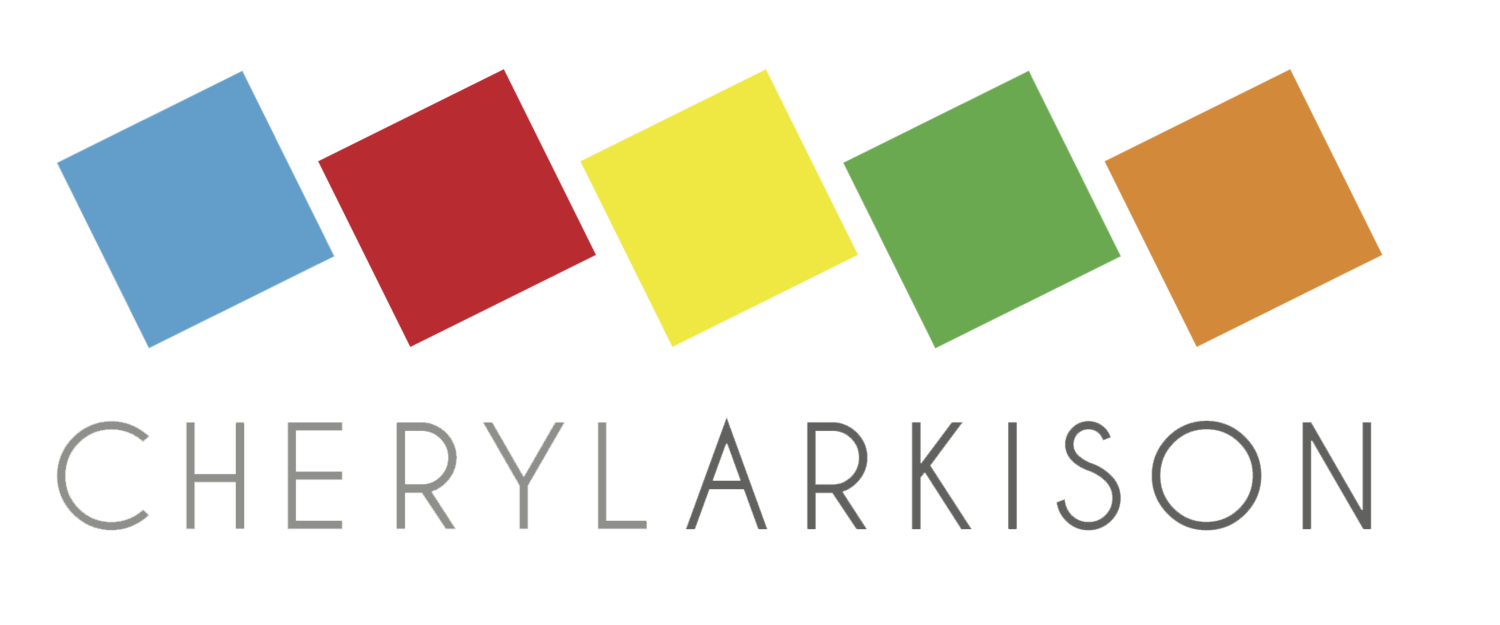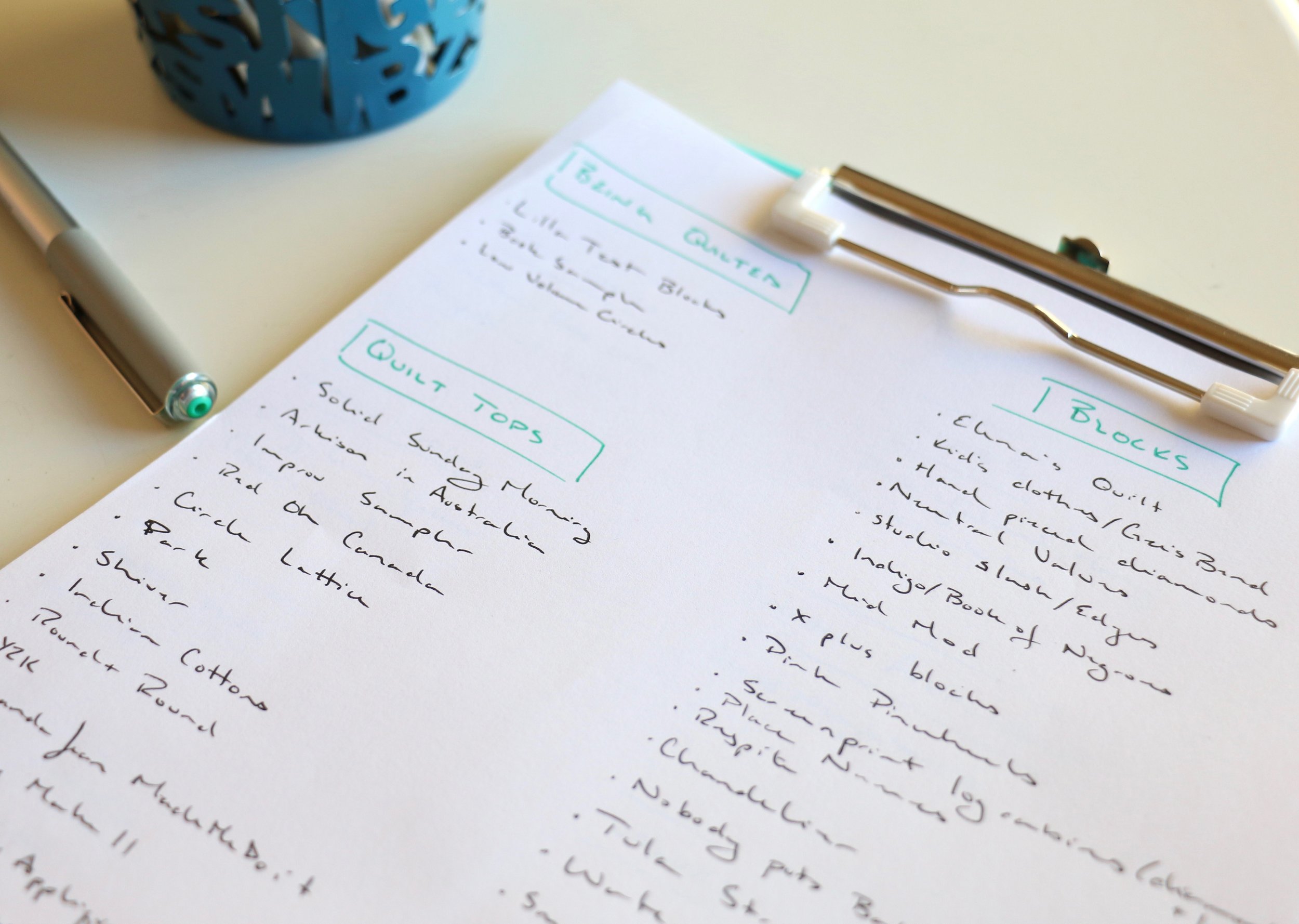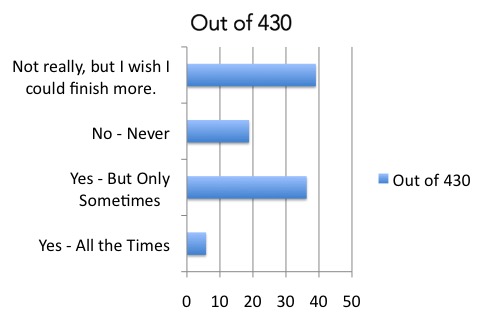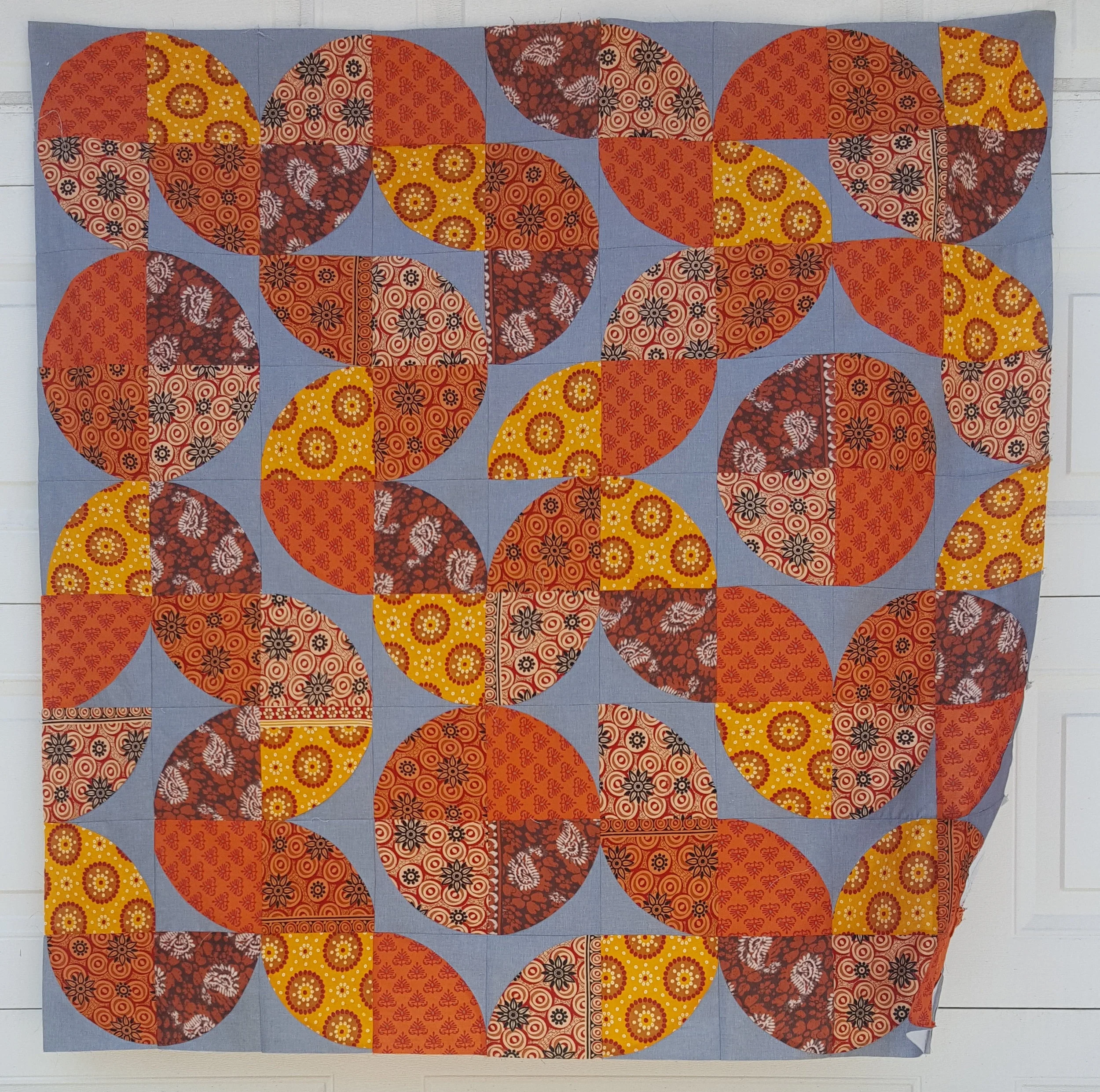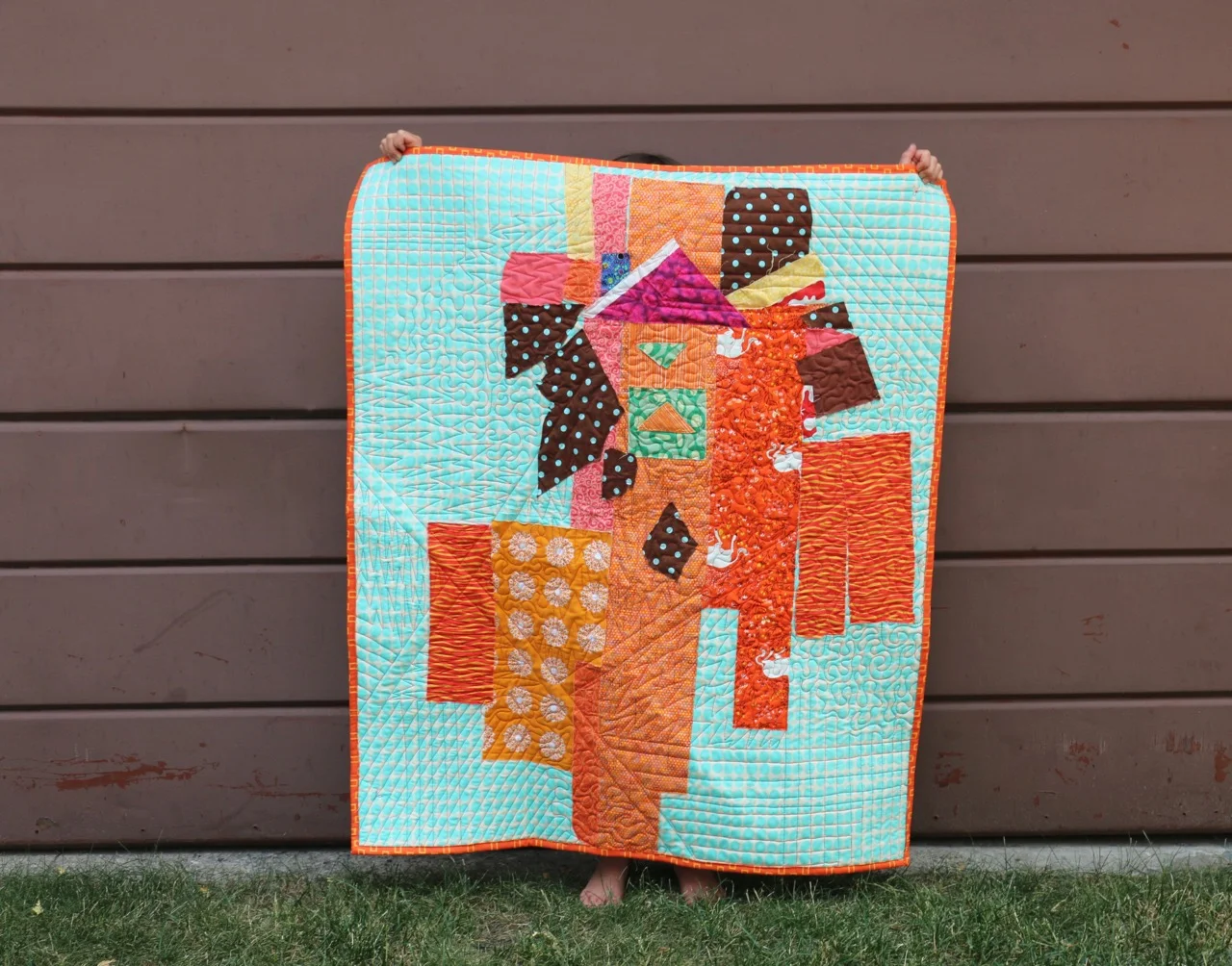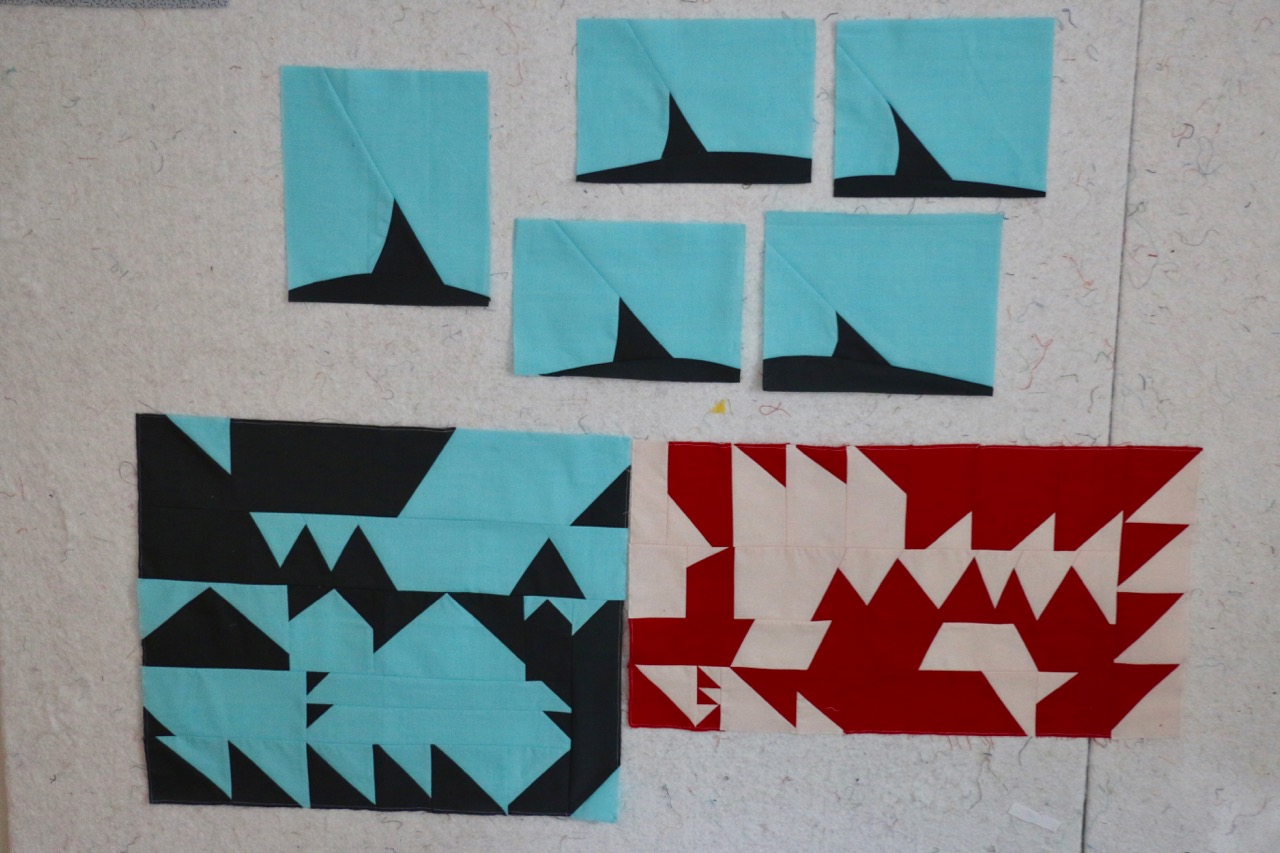Where do you fall when it comes to unfinished quilts? Earlier this year I conducted a survey of readers on the topic. Everything from true confessions on the number of quilts under construction to attitudes towards these projects. Over 400 people answered the survey and I am finally able to share the results. My own current number sits at 47. It certainly creeped up this year!
What counts as a quilt under construction? I left the definition of unfinished open, by design. For some people a stack of fabric counts as an unfinished quilt, for others it is a quilt top. I let everyone define that personally.
Just how many quilts under construction do you have? A few of you have 0, zero! unfinished quilts. A a few of you have over 100 quilts sitting unfinished. Most of you, however, are in the 10-15 unfinished quilts range.
What I think is more telling is how people feel about their number. I asked people does this number stress you out?
Unfortunately, it didn't occur to me to have these questions link so I could figure out the statistical correlation (I am not a survey designer by trade). Same goes for the next question, where I asked people how many is too many?
In looking informally through all the responses though, it appears (but is not proven) that those that have a higher number don't seem all that stressed by the number. Nor do they think there is such a thing as too many. I have a theory about that.
It comes down to perspective. If people view quiltmaking as a means to an end - a process by which we make a product - they get hung up on numbers and checking things off lists. Must finish becomes a mantra because their goal is a finished quilt. But if people view quilting making as an end in and of itself - a process that may or may not result in a product - then the number doesn't really matter.
Of course it should be said that at some point the majority of us do want to finish quilts. We are, ultimately, trying to make quilts here. If the emphasis, however, is on the finished product over the process we might as well go to the mall and buy a factory made piece.
Back to the survery results.
Let's get practical. I asked where in the process do you generally stop working on a quilt? The question about process was left open ended, so the numbers don't add up to 100%. But the results are still telling.
I know, for me, making a backing and basting are my blockades. Quilts pile up there. It seems I am not alone. Those are tedious tasks, no doubt.
One question and the most popular answer probably tell the story here. The question was asked, what makes you stop working on a quilt?
Overwhelmingly, the answer was what one respondent referred to as Shiny Object Disorder. Something else becomes more inspiring in that moment. Or we get bored. It's pretty simple. Other answers included uncertainty about quilting plans or skill level. And that ever present need to wash the floors to baste a quilt!
I was able to present these results and my take on them in a lecture at QuiltCon in February. For the rest of you who weren't there I am happy to both share the results here and my full take on them in the latest issue of Modern Quilts Unlimited. In the article I defend all these unfinished quilts as markers of creativity. If we take on the Five Ps of quilt creativity we can all see it this way.
- Perception - how you view your quiltmaking in general makes a huge difference in how you view unfinished quilts, your skill level, and creativity
- Planning - approaching quiltmaking willy nilly is fine for some, but most of us require a more thoughtful approach to a project and practical considerations of space, time, and money
- Process - there should be as much joy for you in the process as the product
- Practicality - how we manage the unfinished quilts in our space and minds
- Play - bringing that spirit of playful joy to our quiltmaking
Long time readers will recognize these themes from posts. After nearly 20 years a quilter I've learned a few things, and I don't just mean hand applique. When we start our quiltmaking we almost always all start with products in mind. Some of us stay there and some embrace process more. Neither is more right than the other. When it comes to quilts under construction, however, I do need to defend every single one you have as a mark of creative action. Even if it's been years since you touched that project it does not represent a failure, it celebrates creativity! Own it.
